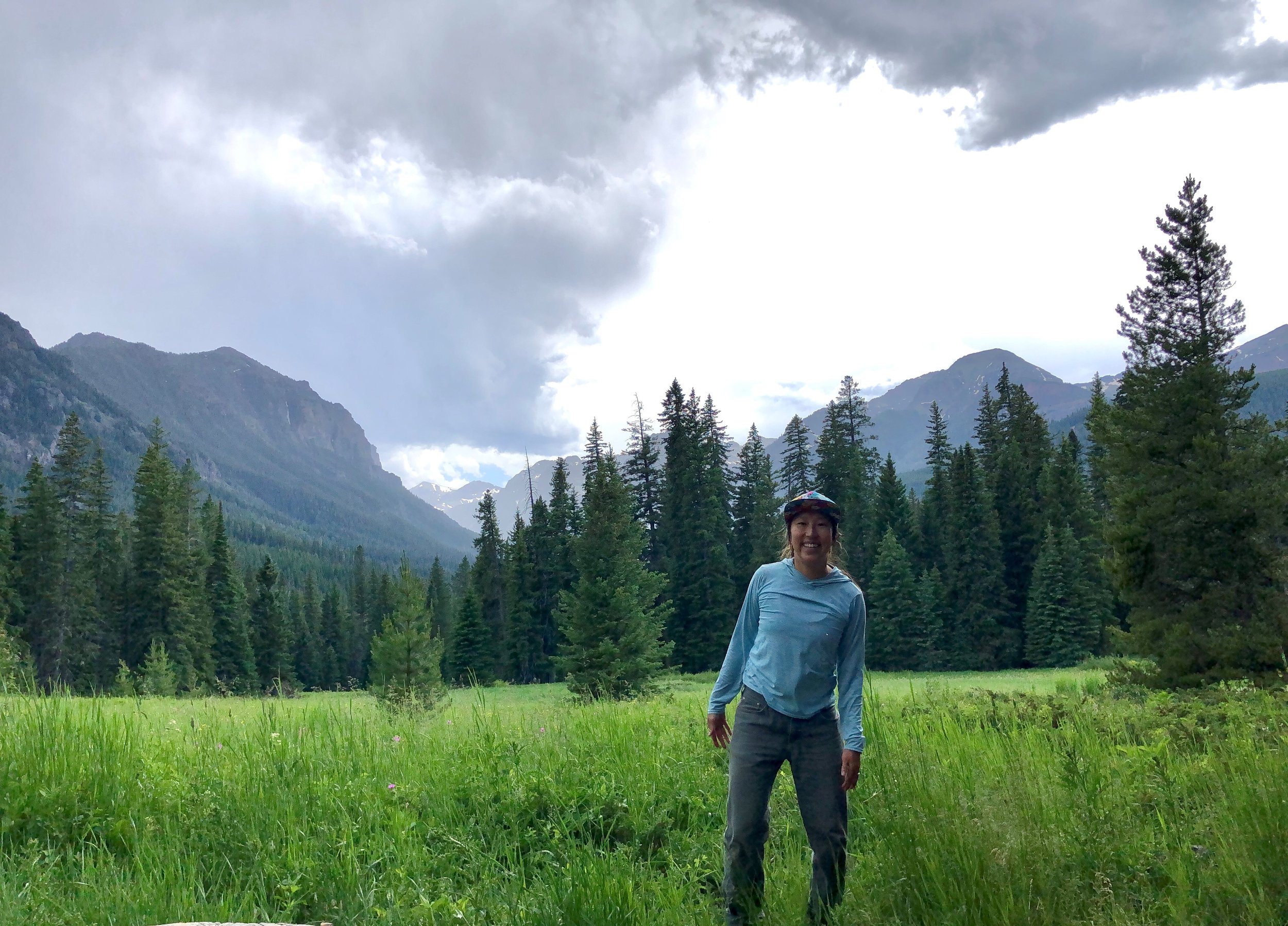Episode 13 | The Vital Role of Whitebark Pine
Having trouble listening on a PC? Listen on Spotify or Apple Podcasts instead.
If you’ve ever spent time in the high, wild reaches of Greater Yellowstone, up near the tree line, you may have come across a silvery, gnarled pine tree. If you’ve seen it, chances are you’ve encountered a whitebark pine. These remarkable trees can live upwards of 1,000 years, and are often the highest elevation pines you’ll find in Greater Yellowstone. And not only that, but they are important to the overall health of ecosystem in some surprising ways.
Dr. Danielle Ulrich, Ph.D. Dr. Ulrich is an assistant professor in plant physiological ecology at Montana State University (Photo Danielle Ulrich)
On today’s episode, we sit down with Dr. Danielle Ulrich, a plant physiologist and assistant professor in Montana State University’s department of ecology. Dr. Ulrich runs a lab conducting research to better understand how high elevation pines respond to a variety of environmental stressors. Among her research subjects is the vitally important keystone species: the whitebark pine.
These trees are a key food source for wildlife such as the Clark’s nutcracker and the iconic Yellowstone grizzly bear. But their impacts don’t stop at wildlife. As you’re about to learn, they also have a vital role to play in protecting the ecosystem and its inhabitants from drought and other impacts of climate change. But as important as they are, the future of the whitebark pine is uncertain. Pine beetles, blister rust, and overcrowding from other trees - thanks to decades of fire suppression - are among the many forces threatening the survival of this amazing species. If fact, you may heard about the whitebark pine's recent designation as a Threatened species under the Endangered Species Act, which means the species receives federal protections to aid in its recovery.
Voices of Greater Yellowstone was created by the Greater Yellowstone Coalition, a conservation nonprofit dedicated to working with people to protect the lands, waters, and wildlife of the Greater Yellowstone Ecosystem, now and for future generations.
The Greater Yellowstone Ecosystem is the land of 49+ Indigenous Tribes who maintain current and ancestral connections to the lands, waters, wildlife, plants, and more.
> Listen on Apple Podcasts, Spotify, or wherever you get podcasts.
> Sign-up for our podcast supporter email list
> Support the podcast and give a gift to GYC
> Dr. Danielle Ulrich (danielle.ulrich@montana.edu) and her lab
> Whitebark Pine Ecosystem Foundation
Podcast Artwork > Rachel Dunlap Art
Music >
Redwood Trail by Audionautix is licensed under a Creative Commons Attribution license (https://creativecommons.org/licenses/...)
Artist: http://audionautix.com/
Thanks for listening in!
-Kristin Oxford & Emmy Reed, GYC Communications



